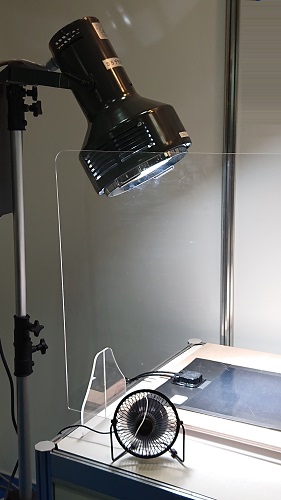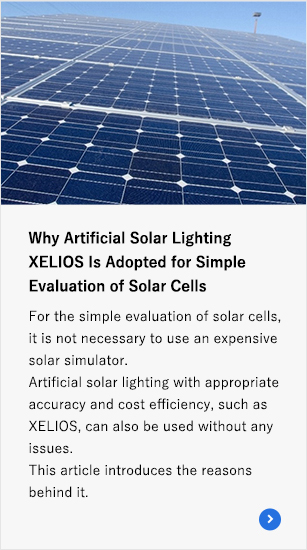Perovskite solar cells are attracting attention as a new form of solar power generation.
With features such as being lightweight, flexible, manufacturable using printing technology, and requiring few natural resources, they are being actively researched and developed as the “next generation of solar cells” to succeed the currently mainstream silicon-based and compound-based solar cells. It is said that mass production has not yet been achieved, but NEDO (New Energy and Industrial Technology Development Organization) has already launched a project aiming for practical application in 2025. Japan, a world leader in the research and development of perovskite solar cells, is expected to quickly establish manufacturing and evaluation technologies, achieve mass production, and bring them to market.
At the Renewable Energy Exhibition held at Tokyo Big Sight from March 1 (Wed) to March 3 (Fri), 2023, a company exhibiting perovskite solar cells used XELIOS XG-500EFSS artificial solar lighting as a light source for power generation demonstration in their booth. Read on to find out the reasons why it was chosen as the light source.

The perovskite solar cell exhibited this time is about the size of an A4 sheet, but the solar simulator required to cover this irradiation area would be quite large. As such, both transporting it to the exhibition hall and setting it up would require considerable effort. Furthermore, there is a risk that the light distribution may be disturbed during transport, so bringing a solar simulator to an exhibition and using it for solar cell power generation demonstrations is not practical.
In contrast, although artificial solar lighting is not as precise as solar simulators, it can be shipped by courier and requires no setup, making it extremely user-friendly and hassle-free. It may be too small to be used for power generation demonstrations of modules, but it has sufficient performance for cell-sized applications.
Even if you are considering purchasing a light source for in-house testing, unless your goal is to measure power generation efficiency with high precision, XELIOS XG-500EFSS artificial solar lighting is the optimal choice. Compared to solar simulators, it is less expensive and can be delivered in about a week after ordering. This artificial solar lighting has a proven track record not only in solar cell irradiation, but has also been used in exhibitions of photocatalysts and infrared-cut glass and films.

Of course, for customers who wish to conduct highly accurate tests, we also offer a lineup of high-precision solar simulators and compact solar simulators with equivalent specifications.


At SERIC, we offer a variety of solar simulators to support the evaluation of solar cells. Please contact our sales department for further details.


![[Industry-Specific Delivery Case] Electrical Equipment Industry](https://en.seric.co.jp/wp-content/uploads/2025/10/example_electrical.jpg)
